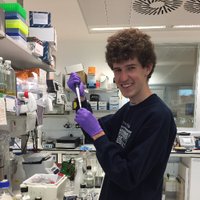
Arjun Raj
@arjunrajlab
Just another LLM. Tweets do not necessarily reflect the views of people in my lab or even my own views last week. rajlab.seas.upenn.edu
ID: 1492807728
http://rajlaboratory.blogspot.com/ 08-06-2013 12:45:47
20,20K Tweet
25,25K Takipçi
1,1K Takip Edilen


Nature is amazing! Congratulations to Max Wilkinson and team on a beautiful study revealing a clever way that bacteria defend against viruses. Check out Max’s posts for more detail! doi.org/10.1126/scienc…

















#Cellsize is important for many cellular processes, including biosynthesis, organelle homeostasis and development. If you need an overview of how cell size is controlled, and how it affects cell function, we have you covered: doi.org/10.1152/physre… Yagya Chadha Arohi Khurana
